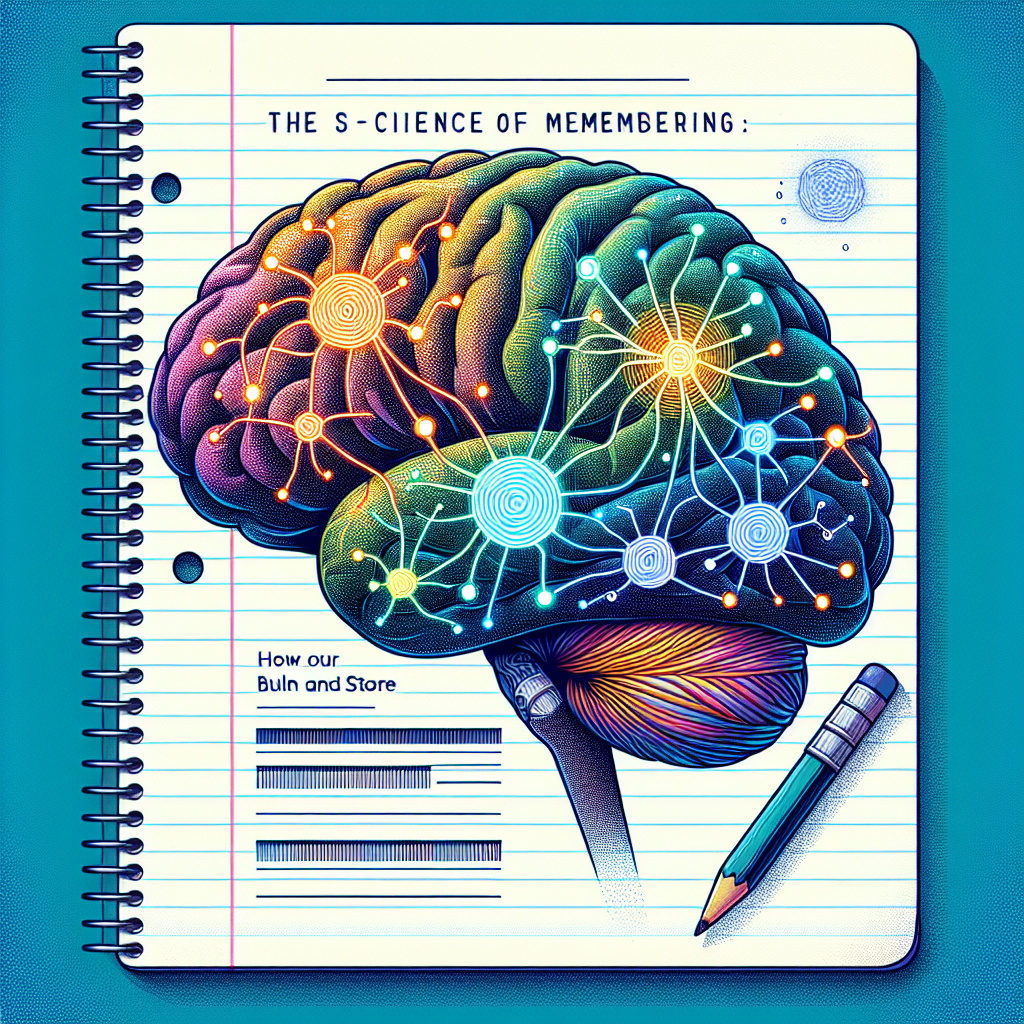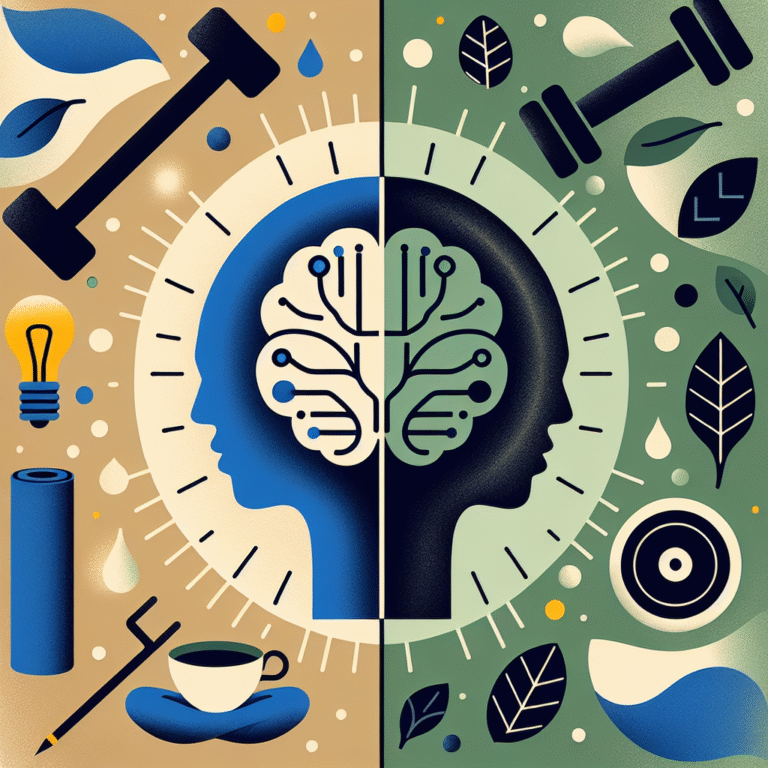
Introduction
Have you ever walked into a room and completely forgotten why you entered? Or perhaps recalled a cherished memory from childhood that brings a smile to your face? Memory isn’t just a method of recalling past events—it’s a cornerstone of our identity, shaping how we interact with the world and making our experiences meaningful. The science of remembering: how our brains build and store memories is not only fascinating but essential for anyone wishing to understand the intricate workings of the mind.
In an age where information overload is the norm, improving our memory can provide a competitive edge, enhance our relationships, and even strengthen our mental health. This comprehensive exploration of the science behind how our brains build and store memories will provide you with actionable insights to optimize your memory capabilities.
Understanding Memory: A Psychological Perspective
The Three Stages of Memory
Memory is often classified into three stages: encoding, storage, and retrieval.
Encoding: This is the initial process where information is transformed into a format that can be stored. Think of it as converting sounds, images, and experiences into a language your brain can understand.
Storage: This stage is where the encoded information is held over time. Memories can be stored in various forms—short-term or long-term, depending on their significance and usage.
- Retrieval: This final stage is where we access the stored information. Successful retrieval relies on various factors, including the associations made during encoding.
The Role of Neurons and Synapses
Neuroscience reveals that memories are tied to the connections between neurons in our brains. When we experience something new, the neurons communicate through synapses, creating a network of connections unique to that memory. Here’s a quick look at how this works:
| Stage | Description |
|---|---|
| Encoding | Neural networks are activated, creating new connections. |
| Storage | The connections strengthen through repetition, forming long-term memories. |
| Retrieval | Accessing the network of connected neurons to recall the memory. |
These connections are dynamic and can change over time, a concept known as neuroplasticity, allowing our brains to adapt and learn from new experiences.
Case Study: Memory Consolidation During Sleep
Imagine you’ve spent the day learning a new skill. According to research, your brain doesn’t stop working as soon as you call it a night. During sleep, particularly during REM sleep, your brain is busy consolidating memories—transforming short-term memories into long-term ones.
A study published in Science highlighted that subjects who took naps after learning tasks performed better than those who remained awake. This emphasizes the importance of sleep in the science of remembering: how our brains build and store memories. Neglecting sleep can hinder memory consolidation and impede learning.
Key Takeaway: Prioritize Rest for Enhanced Memory
Regular, quality sleep is crucial for optimal memory function. Implementing a consistent sleep routine can enhance your ability to encode and retrieve memories efficiently.
The Neuroscience of Memory: Key Brain Areas
Various brain regions play crucial roles in memory formation and retrieval. Understanding these areas can shed light on the science of remembering: how our brains build and store memories.
Hippocampus: Key for forming new memories, especially those related to facts and events. It acts as a temporary storage area.
Amygdala: This area is responsible for emotional memories. Strong emotions can create powerful, vivid memories.
- Cortex: Essential for long-term memory storage, it takes over when the hippocampus has consolidated memories over time.
| Brain Area | Function |
|---|---|
| Hippocampus | Forms new episodic and declarative memories. |
| Amygdala | Processes emotional memories. |
| Cortex | Stores long-term memories and integrates knowledge. |
The Power of Emotion in Memory
Emotional Influence on Memory Retention
Emotions significantly impact our ability to remember, often making emotional moments more memorable. The amygdala’s involvement in processing emotional experiences means that incidents tied to strong feelings are often recalled with clarity. This is evident in traumatic events, where memories can be vivid and long-lasting.
Case Example: Flashbulb Memories
Consider moments like the announcement of significant historical events. For many, where they were and what they felt during such moments often becomes a “flashbulb memory.” These memories are remarkably detailed and have been extensively studied in psychological research. An interesting study found that, even years later, people retain specific details—proving that emotional engagement creates lasting memories.
Strategies to Enhance Memory
Techniques Supported by Science
Understanding the science of remembering: how our brains build and store memories allows us to implement practical methods to improve our memory. Here are several evidence-based strategies:
Spaced Repetition: Instead of cramming information, spread out learning over time. This technique takes advantage of the brain’s natural forgetting curve.
Mnemonic Devices: Use acronyms or visual images to make information easier to remember. This method capitalizes on the encoding process.
Mind Mapping: Organizing information visually can enhance connections between ideas, making them easier to retrieve later.
Engaging Multiple Senses: The more senses you engage when learning something, the better you’ll remember it. Try incorporating sounds, visuals, and even scents.
- Regular Physical Exercise: Physical activity has been shown to enhance neuron growth, boost neurotransmitter function, and improve overall brain health.
The Impact of Nutrition on Memory
Just as sleep and exercise are crucial for building and storing memories, nutrition plays an essential role as well. Certain foods can enhance our memory, while others can lead to cognitive decline.
Memory-Boosting Foods
| Food | Benefit |
|---|---|
| Fatty Fish | Rich in omega-3 fatty acids, crucial for brain health. |
| Blueberries | Packed with antioxidants that may improve communication between brain cells. |
| Turmeric | Contains curcumin, known for its potential to improve memory and promote growth of new neurons. |
| Broccoli | High in antioxidants and Vitamin K, which may enhance cognitive function. |
| Dark Chocolate | Contains flavonoids that can improve blood flow to the brain. |
Conclusion
Understanding the science of remembering: how our brains build and store memories is not only a journey into the fascinating world of neuroscience but also a path toward enhancing our cognitive abilities. By leveraging strategies like spaced repetition, engaging multiple senses, and maintaining a healthy lifestyle, we can significantly improve our memory recall and cognitive function.
Ultimately, memories are the threads that weave together the tapestry of our lives. By applying the insights shared in this article, you can cultivate stronger memories, deepen your learning, and enrich the experiences that shape you.
FAQs
1. How long can memories be stored in the brain?
Memories can be stored indefinitely, but their clarity and accessibility may diminish over time if not recalled or reinforced.
2. What are the types of memory?
The main types of memory include short-term, long-term (which further divides into explicit and implicit), and working memory.
3. Can I improve my memory?
Yes, using techniques like spaced repetition, mnemonic devices, and maintaining a healthy lifestyle can significantly enhance your memory.
4. How does stress impact memory?
Chronic stress can negatively affect memory storage and retrieval. High levels of cortisol, the stress hormone, can impair the function of the hippocampus.
5. What role does aging play in memory?
As we age, changes in brain structure and function can affect memory. Aging may contribute to longer retrieval times and a higher likelihood of forgetting information.
This exploration into the science of remembering: how our brains build and store memories serves as an essential guide for anyone looking to understand the impact of memories on our lives. By appreciating the complexity and the art of memory, we empower ourselves to harness its potential for learning and growth.
















